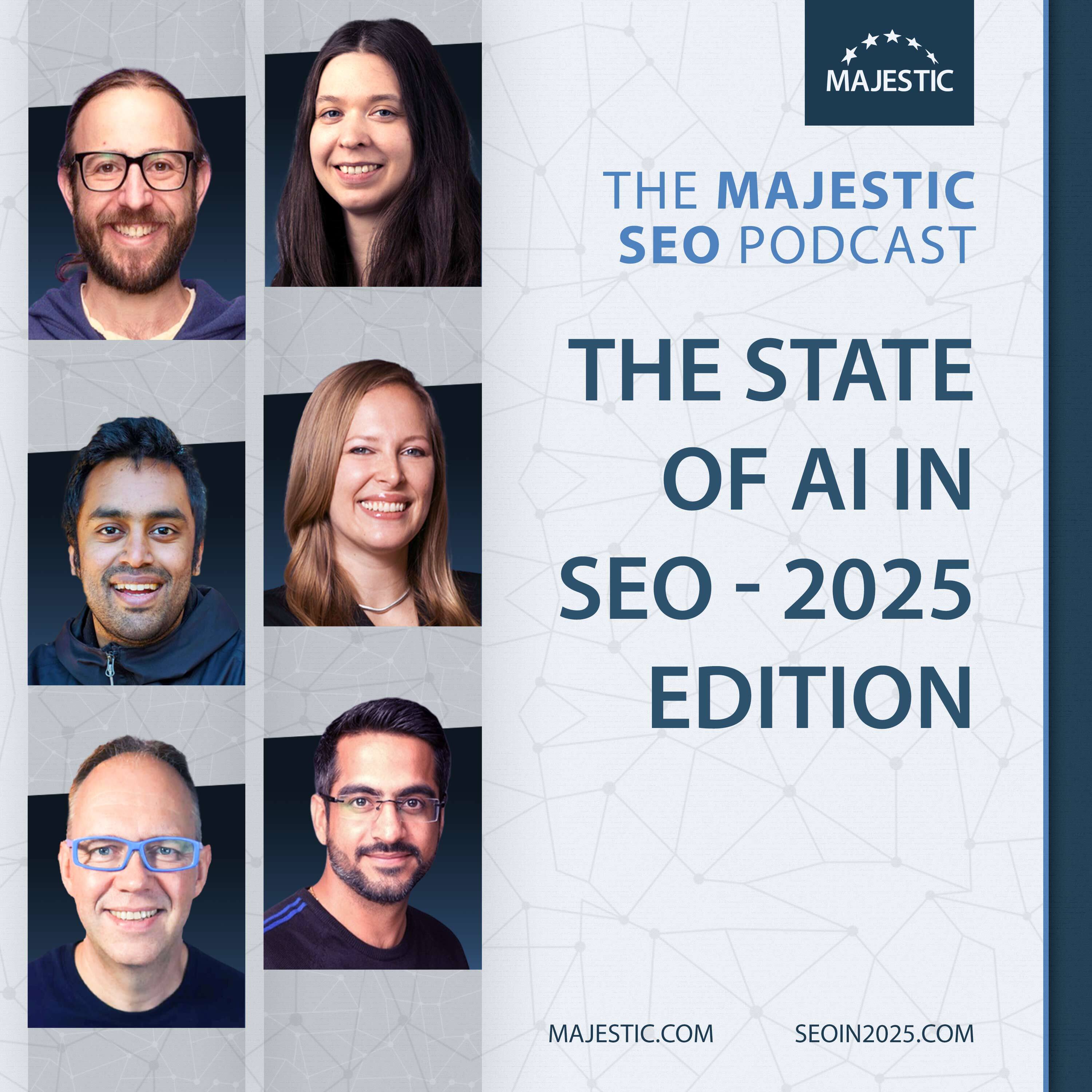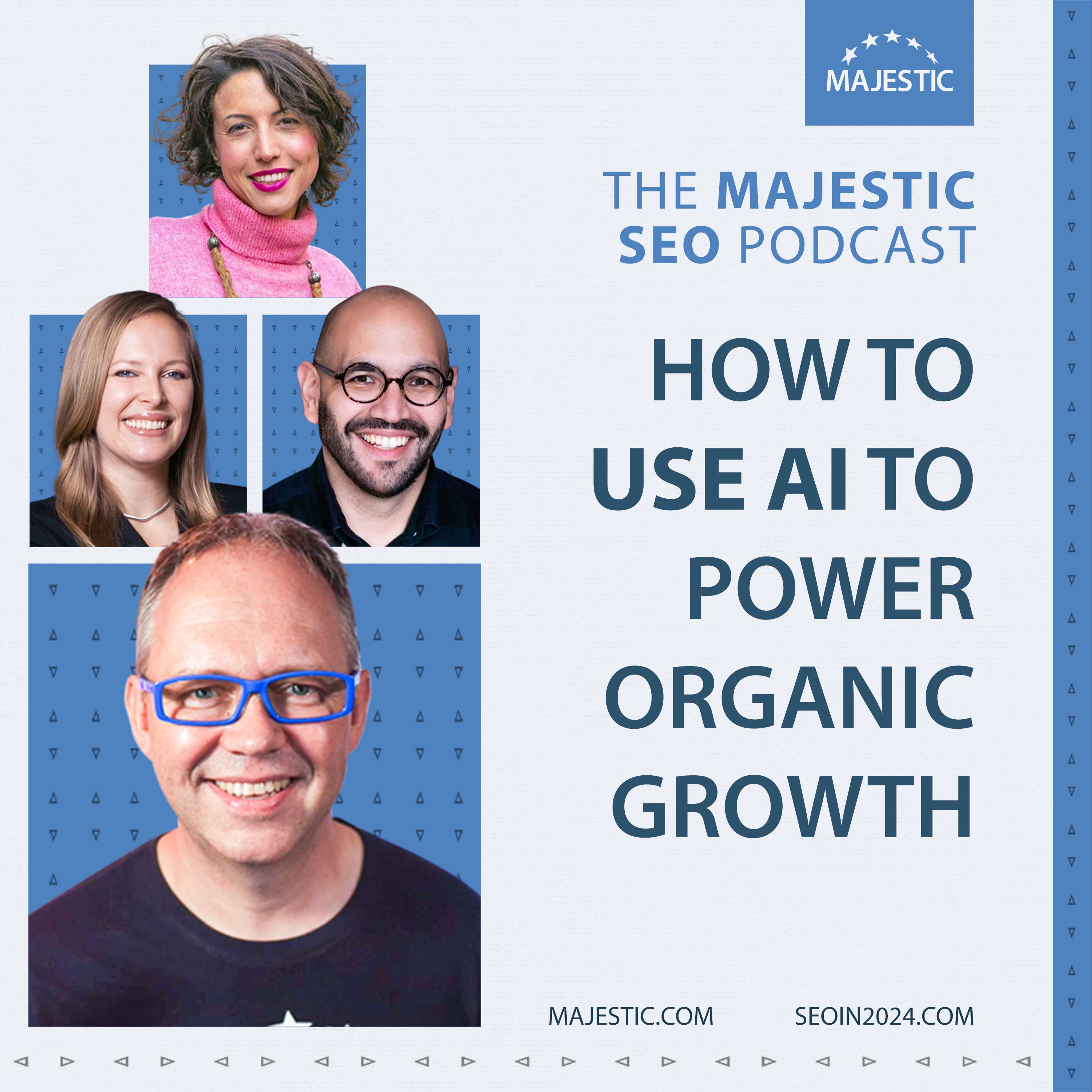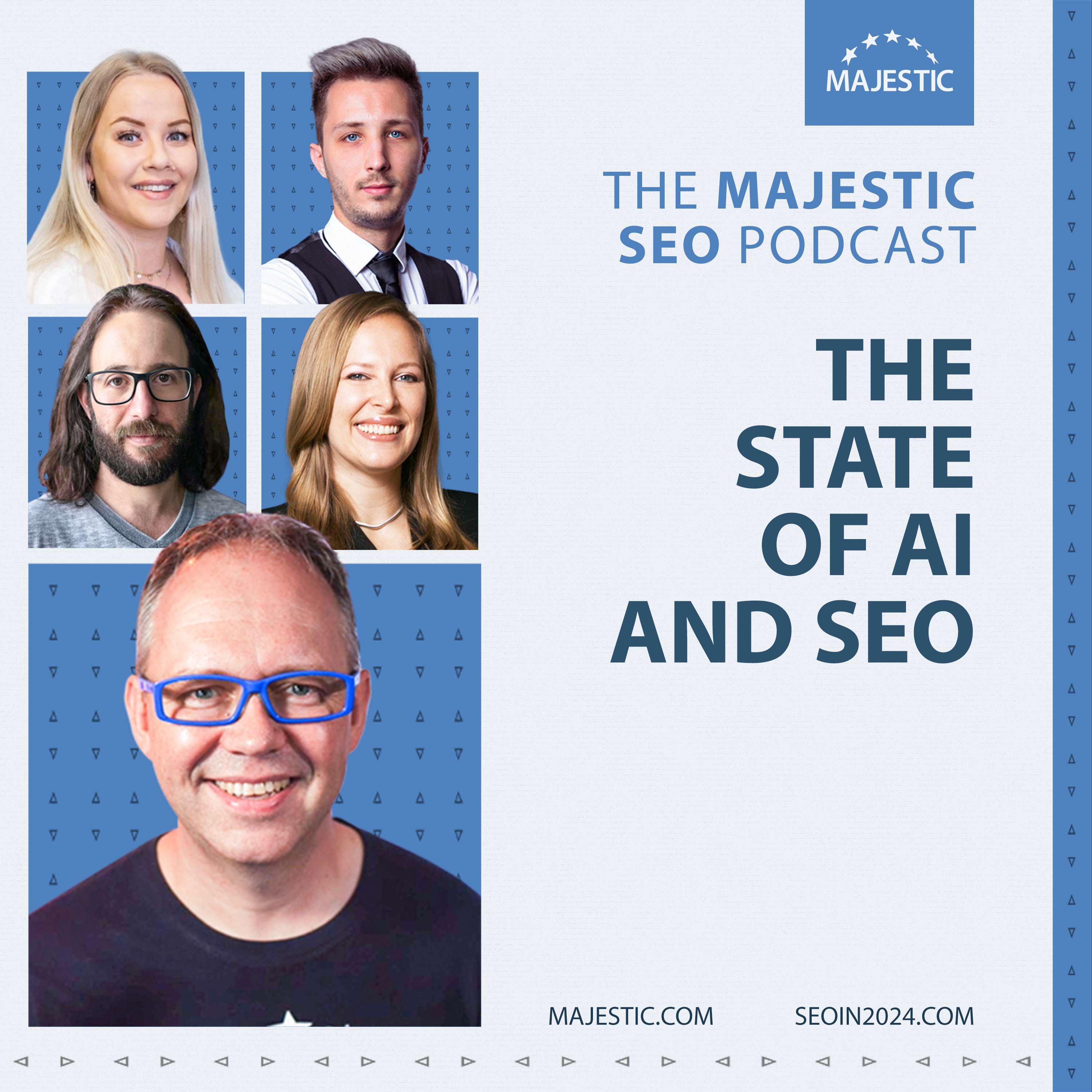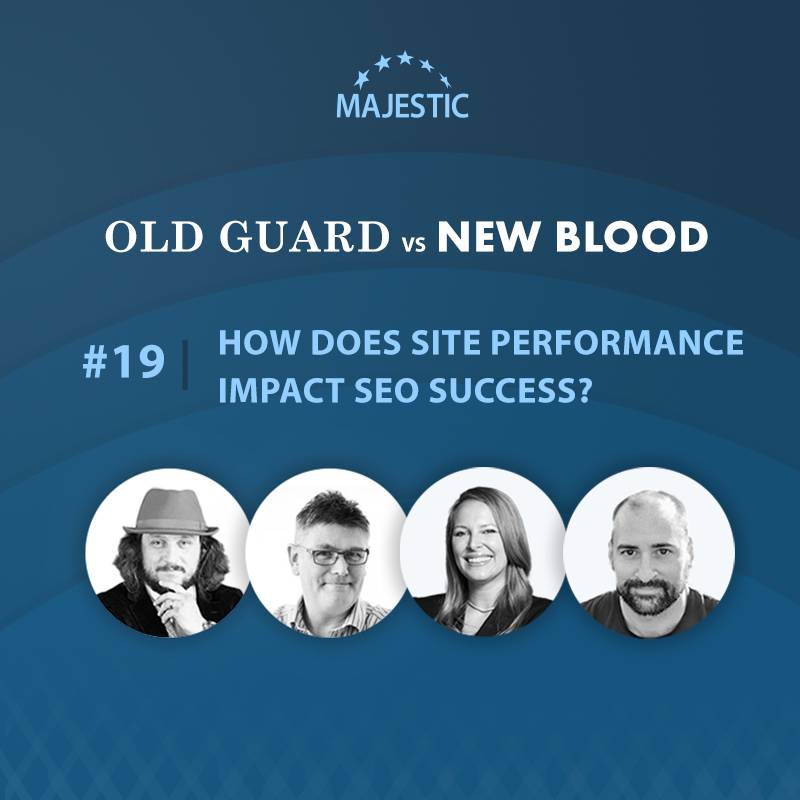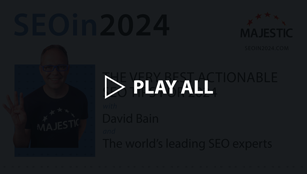-
Site Explorer
- Majestic
- Summary
- Ref Domains
- Backlinks
 New
New Lost
Lost- Context
- Anchor Text
- Pages
- Topics
- Link Graph
- Related Sites
- Advanced Tools
- Author ExplorerBeta
- Summary
- Similar Profiles
- Profile Backlinks
- Attributions
- Compare
-
Link Tools
- My Majestic
- Recent Activity
- Reports
- Campaigns
- Verified Domains
- OpenApps
- API Keys
- Keywords
- Keyword Generator
- Keyword Checker
- Search Explorer
- Link Tools
- Bulk Backlinks
- Neighbourhood Checker
- Submit URLs
- Experimental
- Index Merger
- Link Profile Fight
- Mutual Links
- Solo Links
- PDF Report
- Typo Domain
- Free SEO Tools
- Support
Focus on AI overviews
Pam Aungst Cronin
In many ways, the shifting SERP can feel like uncharted territory. Thankfully, Pam Aungst Cronin from Pam Ann Marketing is drawing up the maps for AI overviews as the new frontier.
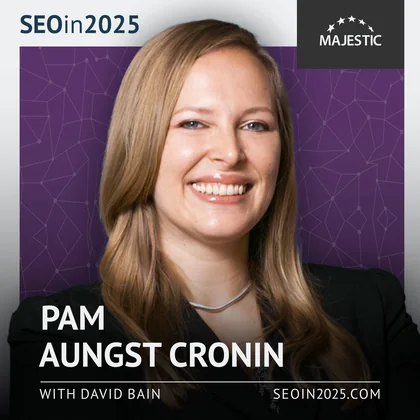
Focus on AI overviews
Pam says: “Focus on optimizing for AI overviews in Google, Bing, and even OpenAI’s forthcoming search engine – as well as the 10 blue links.
You can sort of think of them as one and the same because initial studies show that getting into Google’s AI overviews often means you’re ranking in the traditional 10 blue links as well.”
Are all the websites referenced in the AI overviews going to come from the first page?
“Hopefully we’re going to see that diversify a bit. This could be an opportunity for SEOs to get more exposure for smaller businesses, if you optimize specifically for the long tail queries and answers that show up in AI overviews.
They do seem to mix in some lesser-known sources here and there, and I imagine that will happen more often as Google and Bing start to trust their own AI overview answers more.
As we saw in the beginning, Google’s AI overviews told us to do things like run with scissors for exercise and put glue on your pizza so your cheese doesn’t fall off. They seem to have rolled back a bit on their deployment, so they are more careful, but the intent is for them to ramp it back up. I see that happening already.
There are going to be a lot of placement opportunities in the AI overview answers, not just for the big brands that tend to make it onto page 1, but for smaller brands too.”
How do you optimize for being served within an AI overview answer?
“It goes beyond traditional keyword research and keyword optimization. We’re seeing that the AI overviews look for very definitive statements, the easiest of which is to provide definitions. For ‘What is X?’ queries, you can say, ‘X is Y’.
You also want to go beyond that and look at what else the AI overview summarises for the user, whether it’s a ‘What is…?’ query or not. Based on the structure of the AI overviews, it seems as though using subheadings – H2s, H3s, H4s, etc. – and chunking up your articles into digestible sections is going to be more important than before.
That is always a good idea for humans anyway. People’s attention spans are short, so they like to skim. For the AI overviews, it’s incredibly important to look at what the overview is saying. Whether it’s a definition or some other kind of summary, what are the points that it’s touching on?
For example, if you write medical content, break it into distinct subsections, i.e. symptoms, how to get a diagnosis, treatment, etc. Each of those is an opportunity to get found. If your content is structured accordingly, it’s more likely that the AI overview will select one of your chunks.
Thinking of your content in chunks is a very important mindset for 2025. You’re no longer optimizing an entire piece of content to take up one spot on the SERP. You’re optimizing each chunk almost as if they’re individual pieces of content because you now have this opportunity to get found for individual elements of your content.”
Is there any particular length that will make it more likely that your content will be picked up by AI overviews?
“I haven’t seen any trends or studies about that yet, but I think it’s about the succinctness of your answer. A lot of things can’t be answered or described succinctly – especially very technical topics, medical topics, and financial content. However, thinking of your content in chunks, you can optimize each chunk with a definitive first statement about what you’re about to describe.
You can go into all the details, but you should use a summary sentence at the beginning of each paragraph, rather than at the end, saying that X, Y, and Z are what matters the most when evaluating that topic. Then you can go into the detail of what X, Y, and Z are and all the technicalities of whatever it is you’re talking about.
AIs digest content in chunks. That’s how they learn. The first thing an AI does with information is chunk it up, so they’re indexing very small chunks. Making sure that you’re being very succinct in each section of your content is more important than length.”
Is it similar to the way that many successful YouTube channels currently open with what they’re going to cover in that video and then explain the broader picture?
“Exactly. That’s the type of content that we see ranking in AI overviews.
Having a glossary can actually help you optimize for AI overviews. I know it seems a little rudimentary, especially if you have a highly technical target audience. Why would you define these terms for your audience? They know what they are.
However, it’s working for one of our clients in the medical space. Define a term in a glossary first, then go into more depth about it and about how your product can assist with it.
It doesn’t need to be in a glossary structure, per se. That’s what’s working out for our client. Just think about including definitions in your content, even if you know that your target audience already understands the terms.”
How do you do keyword research to find terms that are likely to end up producing an AI overview?
“Looking at the things that we are accustomed to looking at, and all of those traditional components of search – People Also Ask questions, the Things to Know section, the Related Searches section, etc. – are still very good clues as to what chunks of the topic the AI overview may want to cover.
What we’ve been doing specifically is using Gemini. Google’s AI overviews are powered by its Gemini AI. If you ask Gemini a question, it will give you an answer – a certain chunk of information. It won’t necessarily give you clear sources for each answer immediately, but there’s a little Google icon at the bottom of it that says, ‘Double-check this result’.
If you click that, it will find the sources and give you links to support each chunk. Then you can click and look at each piece of content. I guess we should think of this as AI topic research as opposed to keyword research – or chunk research. You’re looking at what chunks of information are going to be delivered in the AI overview answer, and where it’s getting that information from.
An interesting tip that I learned recently is that the AI, even those that use the web to learn and cite sources, will actually first assemble its answer based on what it has already learned. Then it goes and looks for sources to support it. This is important for a couple of reasons.
First, you will get different sources each time you search. Sometimes, I’ve seen the same sources over and over again, but it will often mix up the sources every single time. That means there are a lot of different opportunities to get found in AI overviews just because of the way that it is randomly selecting its sources.
Secondly, Gemini will tell you when it has trouble finding a source for a certain bit of information that it gives you. It will give you a general knowledge piece of information that it has learned from the web but, when you ask it to double-check its sources, it will highlight it in red and say, ‘I can’t find a good source for this at this time.’
That’s a golden opportunity for SEOs. If you see that, tell your clients to put that chunk of information in their content right away.”
Are there any major differences between optimizing for Google and Bing AI overviews?
“To be honest, I haven’t investigated Bing as much yet. With Google having the lion’s share of the market, we’ve mostly been focusing on trying to figure that out. Bing obviously tends to follow Google as well.
I’ve kept an eye on it, and I don’t see too much being done differently, at least not on the surface.
The other thing to be aware of is OpenAI’s upcoming product. They are coming out with their own search engine (initially code-named SearchGPT), and that also seems to work in a very similar way to Google and Bing.
I don’t think there are going to be many distinct differences in optimizing for AI overviews on Google or Bing, or even on a completely AI-based search engine like SearchGPT. It’s to be determined, obviously, but they all seem to work the same way right now, and therefore optimizing would be the same.”
How does AI overview optimization fit into the wider SEO strategy?
“You do have to be a bit more reactive, and a lot of the opportunity lies in tweaking existing content.
There are sites that have great content that performed really well for years, and it could just do a bit better at getting into the AI overviews with some slight tweaking. I don’t think there’s a need to pause and create a giant strategy roadmap with this in mind.
You’re supposed to be updating your content all the time for freshness and quality anyway. Start doing that with AI overviews in mind.”
If an SEO is struggling for time, what should they stop doing right now so they can spend more time doing what you suggest in 2025?
“I can’t believe I’m about to say this because I’m the biggest fan of keyword research in the world, but spend a little less time on traditional keyword research in favour of AI-based research.
Don’t just use Gemini. Use the web functionality in ChatGPT, and even Perplexity. Perplexity is gaining a lot of ground with AI-based search apparently. I haven’t used it that much yet, but I’m forcing myself to play around with it and do research in there too.
You want to find patterns between what Google is showing, what Bing is showing, what ChatGPT is showing, and what Perplexity is showing. If you can start to see those patterns, you’ll know what you need to do with your content.”
Pam Aungst Cronin is President at Pam Ann Marketing and Stealth Search and Analytics, and you can find her over at PamAnnMarketing.com.
Also with Pam Aungst Cronin
Choose Your Own Learning Style
 Video
Video
If you like to get up-close with your favourite SEO experts, these one-to-one interviews might just be for you.
Watch all of our episodes, FREE, on our dedicated SEO in 2025 playlist.
 Podcast
Podcast
Maybe you are more of a listener than a watcher, or prefer to learn while you commute.
SEO in 2025 is available now via all the usual podcast platforms
Don't miss out
Opt-in to receive email updates.
It's the fastest way to find out more about SEO in 2025.
Could we improve this page for you? Please tell us




